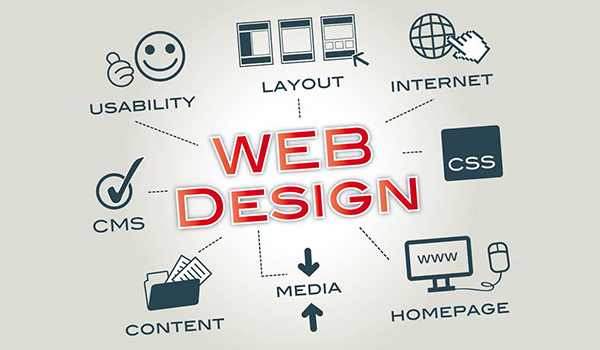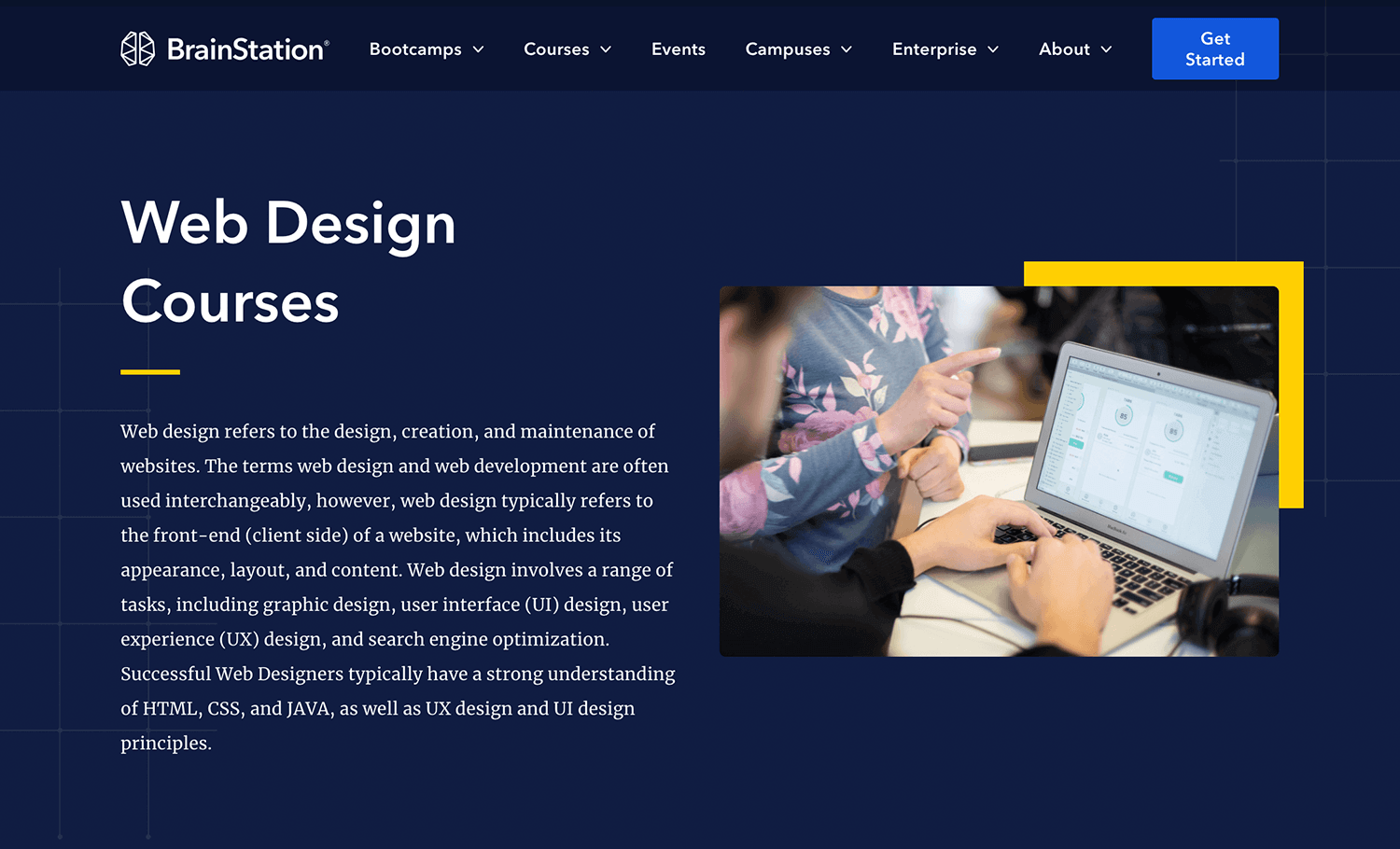The Very Best Kinds of Website Design to Boost Individual Experience and Engagement
In the ever-evolving landscape of digital communication, the efficiency of website design significantly affects individual experience and engagement. Various design techniques, such as minimalist, receptive, and interactive layouts, each deal distinct advantages that can accommodate varied customer demands. Comprehending which types of website design ideal offer these purposes can be critical for services aiming to improve consumer fulfillment and retention. The inquiry stays: which design elements genuinely reverberate with customers and foster meaningful engagement? The exploration of these concepts reveals essential understandings that might redefine your strategy to Web style.
Minimal Website Design
As digital landscapes end up being increasingly cluttered, minimal Web layout has actually emerged as an effective method to enhancing individual experience. This layout viewpoint prioritizes simplicity, concentrating on essential aspects while getting rid of unneeded diversions. By using enough white space, uncomplicated navigation, and a limited shade combination, minimalist layout fosters clearness and directs user attention to crucial content.
The core principle of minimal Web design is to develop a smooth interaction for individuals. By decreasing cognitive load, users can promptly understand info without feeling bewildered. This straight technique not just improves functionality but likewise encourages involvement, as visitors are much more likely to explore a site that is visually appealing and very easy to browse.
Additionally, minimal design commonly emphasizes typography and images, making use of these elements strategically to communicate messages properly. This focus on essential components can improve brand name identification and create an unforgettable customer experience. Basically, minimalist website design is not just a pattern; it is a thoughtful technique that acknowledges the importance of user-centered style. By stripping away additional elements, designers can develop a much more interesting, efficient, and satisfying Web experience for all users.
Receptive Web Design
In today's varied digital atmosphere, responsive Web design has ended up being crucial for developing a seamless individual experience across a wide variety of tools. As users accessibility web sites on smartphones, tablet computers, desktops, and laptops, the ability of a site to adapt its format and web content to various screen dimensions and resolutions is vital.
Responsive Web layout uses flexible grids, images, and CSS media inquiries to make sure that Web content exists efficiently, no matter the gadget utilized. This technique not only enhances the visual allure of an internet site however likewise considerably enhances usability. Users are more probable to engage with a website that offers a consistent experience, as it eliminates the irritation of needing to focus or scroll exceedingly.
By taking on receptive style, organizations can enhance their visibility and get to a wider target market. In summary, responsive Web layout is an essential technique that boosts customer experience, involvement, and total complete satisfaction.
Interactive Website Design
Receptive Web layout prepares for boosting customer experience, yet interactive Web design takes this an action further by involving customers in a much more vibrant means - Aligned Position Web Design. By incorporating elements such as computer animations, clickable models, and real-time feedback, interactive Web design astounds customers, attracting them right into a richer surfing experience
This approach not just fosters interaction however also motivates users to explore material actively instead than passively eating it. Strategies such as gamification, where individuals earn benefits for completing jobs, can dramatically improve the time invested on a website and enhance total contentment. Interactive attributes can streamline complicated info, making it more pleasurable and absorbable.

Including interactive layout aspects can also bring about higher conversion rates, as individuals are most likely to engage with a website that actively entails them. Aligned Position Web Design. Ultimately, interactive website design changes customer experiences into memorable journeys, making sure that visitors return time after time
Flat Design
Defined by its minimalistic method, level layout stresses simplicity and functionality, removing away unnecessary components and focusing on crucial attributes. This layout ideology prioritizes functionality, guaranteeing that users can browse user interfaces easily and performance. By employing a clean visual, level style gets rid of the mess often found in extra elaborate styles, consequently improving individual concentrate on content and performance.
The trademark of flat layout exists in its use vibrant shades, easy click over here typography, and geometric shapes. These aspects contribute to a visually attractive user interface that is both modern and friendly. Additionally, level layout fosters a feeling of clearness, enabling individuals to discern vital activities and information without disturbance.
Moreover, level design is particularly reliable in receptive Web design, as its simplicity translates well throughout different tools and display dimensions. By focusing on crucial functions, flat layout not only fulfills customer needs however also motivates seamless interaction, making it a vital part of efficient Web style strategies.
Adaptive Web Layout
Adaptive Web design personalizes the user experience by developing numerous dealt with designs customized to various screen dimensions and gadgets. Unlike responsive style, which fluidly adjusts a single format, adaptive style employs distinctive formats for particular breakpoints, guaranteeing optimal discussion on pop over to this site various platforms. This strategy allows developers to concentrate on the special qualities of each device, improving functionality by supplying specifically what customers require based upon their context.
One of the key advantages of flexible website design is its capability to optimize tons times and efficiency. By serving customized material and photos that fit the user's gadget, internet sites can lessen information usage and boost loading rates. This is specifically valuable for users with slower connections or limited data strategies.

In addition, flexible design facilitates an extra consistent and regulated branding experience. Since developers develop multiple designs, they can make certain that the aesthetic elements line up with the brand name's identity throughout different platforms - Aligned Position Web Design. This results in a natural individual experience, improving involvement and advertising customer retention
Verdict
To conclude, the assimilation of minimal, responsive, and interactive Web layout principles considerably improves customer experience and involvement. Minimalist layout promotes clearness and focus, while responsive style guarantees adaptability throughout various devices, promoting accessibility. Interactive design captivates customers through dynamic aspects, motivating expedition and personalization. Collectively, these style approaches add to the development of user-friendly environments that not only boost contentment however additionally drive greater conversion rates, highlighting check these guys out their crucial value in contemporary website design techniques.

Minimalist layout cultivates clearness and emphasis, while responsive style ensures adaptability throughout different tools, advertising accessibility. Jointly, these design approaches add to the production of user-friendly environments that not just boost contentment however likewise drive higher conversion prices, highlighting their critical importance in modern Web layout strategies.